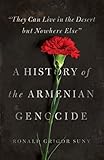"They Can Live in the Desert but Nowhere Else" : A History of the Armenian Genocide / Ronald Grigor Suny.
Material type: TextSeries: Human Rights and Crimes against Humanity ; 23Publisher: Princeton, NJ : Princeton University Press, [2015]Copyright date: ©2015Description: 1 online resource : 25 halftones. 5 mapsContent type:
TextSeries: Human Rights and Crimes against Humanity ; 23Publisher: Princeton, NJ : Princeton University Press, [2015]Copyright date: ©2015Description: 1 online resource : 25 halftones. 5 mapsContent type: - 9780691175966
- 9781400865581
- 956.6/20154 23
- DS195.5 .S79 2015
- online - DeGruyter
- Issued also in print.
| Item type | Current library | Call number | URL | Status | Notes | Barcode | |
|---|---|---|---|---|---|---|---|
 eBook
eBook
|
Biblioteca "Angelicum" Pont. Univ. S.Tommaso d'Aquino Nuvola online | online - DeGruyter (Browse shelf(Opens below)) | Online access | Not for loan (Accesso limitato) | Accesso per gli utenti autorizzati / Access for authorized users | (dgr)9781400865581 |
Frontmatter -- Contents -- Acknowledgments -- Introduction -- Sources, Notes , and Transliteration -- Chapter One. Empire -- Chapter Two. Armenians -- Chapter Three. Nation -- Chapter Four. Great Powers -- Chapter Five. Revolution -- Chapter Six. Counterrevolution -- Chapter Seven. War -- Chapter Eight. Removal -- Chapter Nine. Genocide -- Chapter Ten. Orphaned Nation -- Conclusion: Thinking about the Unthinkable: Genocide -- Historians Look at the Armenian Genocide. A Bibliographical Discussion -- Notes -- Index -- Backmatter
Starting in early 1915, the Ottoman Turks began deporting and killing hundreds of thousands of Armenians in the first major genocide of the twentieth century. By the end of the First World War, the number of Armenians in what would become Turkey had been reduced by 90 percent-more than a million people. A century later, the Armenian Genocide remains controversial but relatively unknown, overshadowed by later slaughters and the chasm separating Turkish and Armenian interpretations of events. In this definitive narrative history, Ronald Suny cuts through nationalist myths, propaganda, and denial to provide an unmatched account of when, how, and why the atrocities of 1915-16 were committed. Drawing on archival documents and eyewitness accounts, this is an unforgettable chronicle of a cataclysm that set a tragic pattern for a century of genocide and crimes against humanity.
Issued also in print.
Mode of access: Internet via World Wide Web.
In English.
Description based on online resource; title from PDF title page (publisher's Web site, viewed 23. Mai 2019)


